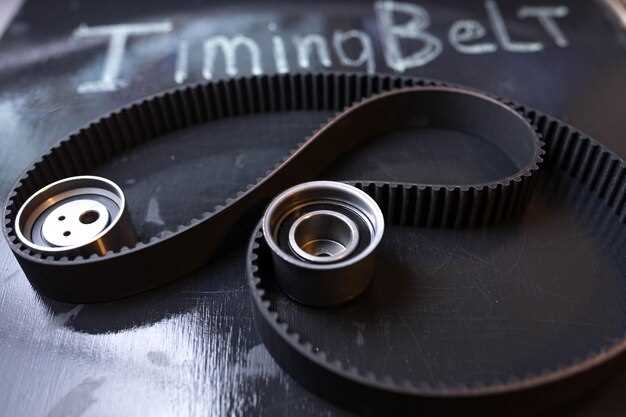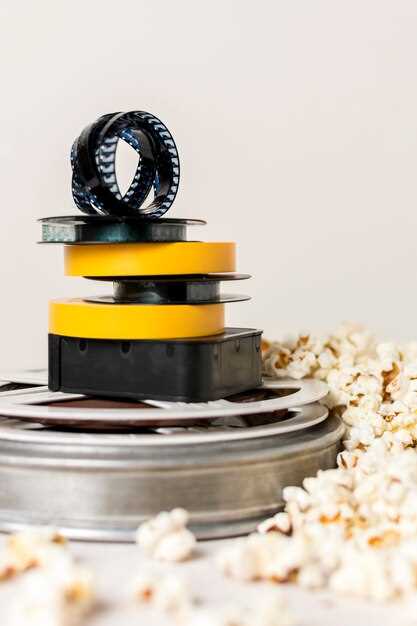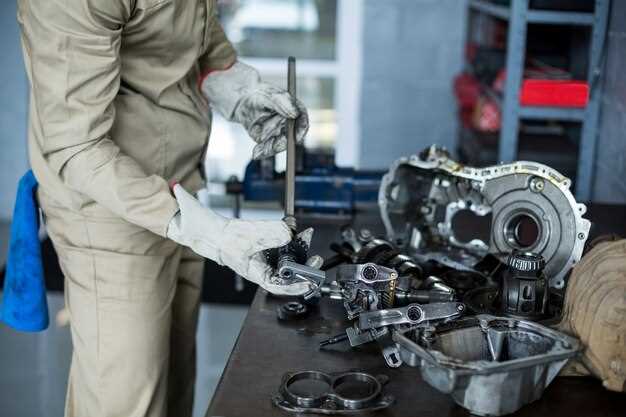
Restoration projects for classic cars, such as the Volkswagen Corrado, often hinge on the quality and authenticity of the parts used. Finding the right OEM (Original Equipment Manufacturer) parts is crucial to preserving the vehicle’s originality and enhancing its performance. As enthusiasts embark on their restoration journey, understanding where and how to source genuine parts can significantly impact the final outcome of the project.
The quest for authentic parts can be daunting. Many sellers offer aftermarket alternatives that may look similar but often lack the quality and durability of genuine components. It is essential for restorers to distinguish between OEM parts and these substitutes, ensuring that each component aligns with the original specifications of the Corrado. This approach not only maintains the car’s integrity but also helps in retaining its value over time.
In this article, we will explore various strategies for sourcing genuine parts, from trusted dealerships to specialized online retailers. We will also discuss the importance of documentation and verification when purchasing OEM parts, ensuring that restoration projects are not just labor-intensive endeavors, but rewarding journeys that celebrate the legacy of the Corrado.
Identifying OEM Suppliers for Corrado Parts
When embarking on a restoration project for the classic Volkswagen Corrado, sourcing OEM (Original Equipment Manufacturer) parts is crucial for ensuring authenticity and longevity. Identifying reliable OEM suppliers can significantly impact the quality of the restoration and the overall performance of the vehicle.
To begin, it’s essential to understand the characteristics that define OEM parts. These components are designed and produced by the original manufacturer, ensuring a perfect fit and adherence to original specifications. This focus on quality makes them preferable for classic car restorations, where maintaining originality is often a top priority.
Here are several strategies for identifying reputable OEM suppliers for Corrado parts:
| Method | Description |
|---|---|
| Official Dealerships | Start with Volkswagen dealerships that specialize in vintage models. They often keep a stock of OEM parts or can order them directly from the manufacturer. |
| Online OEM Retailers | Utilize reputable online platforms dedicated to classic car parts. Websites that specialize in OEM parts typically provide detailed descriptions and verification of authenticity. |
| Car Enthusiast Forums | Engagement with Corrado clubs and forums can lead to recommendations for trusted OEM suppliers. Fellow enthusiasts often share their experiences and may provide contacts for sourcing hard-to-find components. |
| Automotive Swap Meets | Attend local automotive swap meets where vendors often sell OEM parts. Building relationships with suppliers here can lead to better deals and exclusive finds. |
| Restoration Specialists | Consulting with professionals who specialize in Corrado restoration can provide insights into the best suppliers. These experts often have established connections within the industry. |
Lastly, verifying the authenticity of the parts is critical. Always request documentation or proof of OEM status when purchasing. This diligence will help to ensure that the components are not only genuine but also add value to the restoration project. With careful research and dedication, finding trustworthy OEM suppliers for Corrado parts can significantly enhance the overall restoration experience.
Evaluating the Quality of Used Parts for Restoration

When embarking on a classic car restoration project, sourcing high-quality used parts is crucial for maintaining authenticity and performance. Begin by researching the specific components needed for your particular model to understand their typical wear patterns and common issues. This knowledge will aid in identifying parts that are worth consideration.
Inspect parts thoroughly for any signs of damage, excessive wear, or corrosion. Check for cracks, dents, or unusual repairs that may compromise the integrity of the piece. Components like suspension parts, engine blocks, and body panels should be especially scrutinized, as their quality directly impacts the overall safety and functionality of the vehicle.
Consider the part’s history. Asking for documentation or maintenance records can provide insight into how the part was used and maintained. Parts with a well-documented past are often more reliable than those with unknown histories. Additionally, sourcing parts from reputable suppliers who specialize in classic car restoration can significantly enhance the chances of obtaining quality components.
Another important factor is the compatibility of the used parts with your restoration project. Ensure that the parts are original or compatible reproductions that meet the specifications of the classic model. Misfitting components can lead to further issues down the line, undermining the integrity of your restoration efforts.
Finally, consider the part’s availability for future repairs. Parts that are more common may be easier to replace or repair if needed, adding to the longevity of your restoration. By carefully evaluating the quality of used parts, restoration enthusiasts can make informed decisions that will result in a successful and lasting classic car restoration.
Understanding the Importance of Authenticity in Parts
When undertaking a restoration project for a classic car like the Volkswagen Corrado, sourcing genuine parts is critical. Authenticity in parts not only impacts the vehicle’s value but also ensures mechanical integrity and aesthetic accuracy.
Here are key reasons highlighting the importance of using authentic parts in restoration projects:
- Preservation of Value: Classic cars often appreciate in value, especially when they are restored using original parts. Authentic components help maintain the vehicle’s historical significance, enhancing its market value for collectors.
- Compatibility and Performance: Genuine parts are designed specifically for the vehicle model. This ensures proper fit and function, leading to optimal performance. Counterfeit or aftermarket alternatives may not meet the same standards, resulting in reliability issues.
- Aesthetic Integrity: Classic cars have unique designs that are integral to their identity. Using authentic parts ensures that the restoration maintains the original look and feel of the Corrado, preserving its charm and character.
- Durability and Reliability: Original components are often made from higher quality materials compared to many aftermarket parts. This results in better longevity and dependability, which is crucial for a classic car’s performance.
- Support for Historic Documentation: Using genuine parts allows enthusiasts to keep accurate records of the restoration process. This documentation is valuable for provenance and can be beneficial in future resale situations.
In conclusion, while authentic parts may initially be more expensive or harder to find, their importance in the restoration of classic cars like the Corrado cannot be overstated. By committing to genuineness, restorers ensure that their projects are not only beautiful but also maintain the legacy of automotive history.
Building Relationships with Parts Vendors
Establishing strong connections with parts vendors is crucial for anyone engaged in Corrado restoration projects. OEM parts are often essential for ensuring authenticity and quality during a restoration process. Building these relationships can yield numerous benefits for classic car enthusiasts.
Here are some strategies to foster these relationships:
- Research Reliable Vendors: Start by identifying reputable vendors specializing in OEM parts for the Corrado. Look for those with positive reviews and a proven track record in classic car restoration.
- Engage with the Community: Join forums or social media groups focused on Corrado restoration. Networking with other enthusiasts can lead you to trustworthy vendors.
- Communicate Clearly: When reaching out to vendors, be clear about your needs. Specify the parts you require and discuss your restoration goals. Clear communication fosters trust.
- Be Open to Recommendations: Vendors often have valuable insights about parts availability and quality. Listen to their recommendations and advice to enhance your restoration project.
- Establish Long-term Partnerships: Building a relationship takes time. Regularly purchase parts or services, and maintain communication even after completing a project to stay on their radar.
Additional considerations include:
- Negotiating Terms: Discuss pricing, warranties, and return policies to ensure you are protected in your transactions.
- Attending Events: Participate in car shows or vendor expos. Meeting vendors face-to-face can strengthen your relationships and provide you with unique sourcing opportunities.
- Feedback Loop: Provide feedback on the parts received. This not only helps the vendor improve but also establishes you as a knowledgeable and engaged customer.
By prioritizing relationship-building with parts vendors, restoration projects can leverage the best OEM components, ensuring the finished Corrado remains a classic that stands the test of time.
Utilizing Online Marketplaces for Hard-to-Find Components

In the world of classic car restoration, sourcing genuine parts can be a daunting challenge, particularly when it comes to hard-to-find components for models like the Corrado. Online marketplaces have revolutionized the way enthusiasts locate and purchase these elusive parts, creating an invaluable resource for restoration projects.
Platforms such as eBay, Craigslist, and specialized automotive forums provide a vast selection of parts that may no longer be available through traditional retail options. These online spaces enable restorers to connect with sellers from around the globe, increasing the chances of finding rare components that are crucial for maintaining authenticity in classic vehicles.
Utilizing search filters and keywords effectively can streamline the process of identifying specific parts. Tailoring searches for terms like “Corrado restoration parts” or “classic Volkswagen components” helps enthusiasts discover listings that might otherwise be overlooked. Additionally, setting alerts for new postings can ensure timely notifications when desired items become available.
Engaging with online communities dedicated to classic car restoration can enhance the search experience. Forums and social media groups not only provide recommendations for trustworthy sellers but also facilitate discussions that may lead to discovering parts that are otherwise unknown. Knowledgeable members often share their insights on where to find rare components, further assisting in the restoration journey.
It’s crucial to verify the authenticity and condition of parts before making a purchase. Reading seller reviews, asking for detailed photographs, and requesting information about the part’s history can help ensure that buyers receive quality components suited for their restoration needs. By leveraging online marketplaces effectively, classic car enthusiasts can successfully tackle the challenge of sourcing hard-to-find parts, ultimately enhancing their restoration projects.
Tips for Verifying Parts Compatibility with Your Corrado
Restoration projects require meticulous attention to detail, especially when it comes to sourcing OEM parts for your Volkswagen Corrado. Here are some effective tips to ensure the parts you acquire are compatible with your vehicle.
1. Consult Original Documentation: Start by examining the owner’s manual and parts catalog specific to your Corrado model. These documents often list part numbers and specifications, helping you identify the exact components that are compatible with your vehicle.
2. Verify Part Numbers: When sourcing parts, always check the part number. Genuine OEM parts have unique identifiers that ensure they match the original specifications. If a part number matches the one in your documentation, it’s likely a safe choice for your restoration.
3. Use Trusted Sources: Purchase parts from reputable distributors and shops that specialize in Volkswagen vehicles. Established suppliers are more likely to offer authentic OEM components. Avoid generic or aftermarket parts unless they specifically state compatibility with your Corrado.
4. Check Compatibility with Other Models: Some parts may be shared among various Volkswagen models. Research whether a part is used in other models that share similar features or components with your Corrado. This can widen your options when sourcing difficult-to-find parts.
5. Join Forums and Communities: Engaging in online forums or local car clubs dedicated to Corrado enthusiasts can be invaluable. Fellow restorers often share their experiences and tips on compatible parts, offering insight into the most reliable sourcing options.
6. Inspect Used Parts Carefully: If you decide to go with used parts, examine them closely for wear and compatibility signs. Consider contacting the seller for any additional information regarding the part’s history and usage to better gauge its fit for your restoration project.
By following these tips, you can ensure that the parts you source for your Corrado restoration not only fit but also uphold the integrity and performance of this iconic vehicle.












